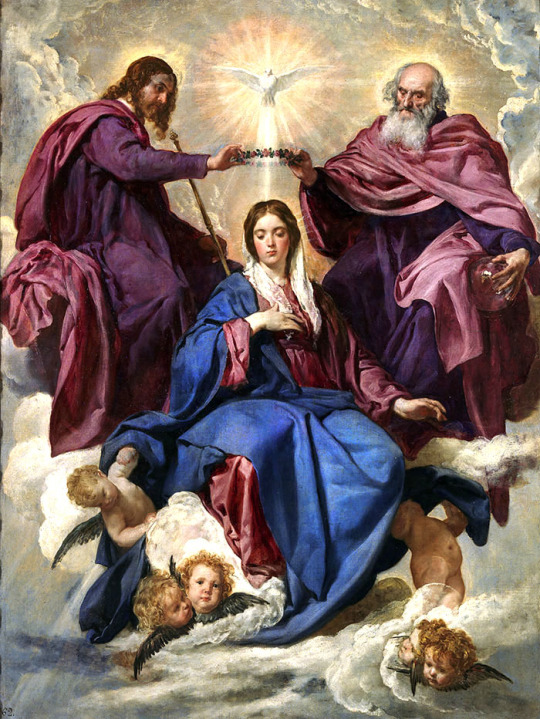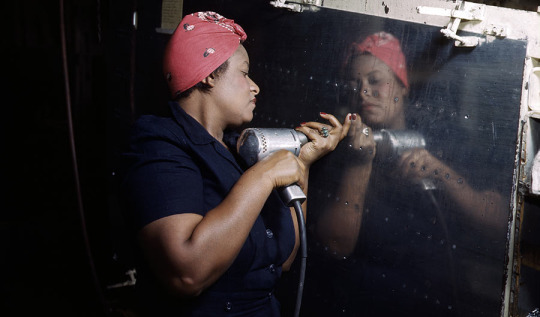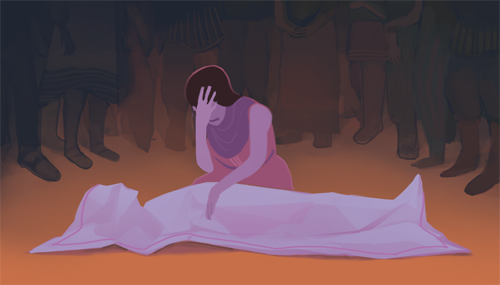[Nekko Fox]'s diary
Censorship of content is bad.
The marketplace of ideas requires that we accept all comers, even those we disagree with.
Creating an artificial gateway punishes the writer and reader both and deprives society from the opportunity to examine and reject an idea if it were bad or embrace it if it is good.
Written about Saturday 2016-01-16
Written: (3442 days ago)
This is exactly how and when the color pink became feminized
For most of Western history pink did not have the gender connotations it does today. So what happened?
Pink actually used to be a masculine color, blue a feminine one

Before the 20th Century, young men and women alike wore pink clothing.
Pink actually leant more on the masculine side - it was seen as a lighter shade of red which was thought to be a ‘fierce’ and ‘warlike’ color and therefore was more appropriate for boys.
Blue was more associated with girls since the Virgin Mary is customarily dressed in blue robes in paintings and sculptures. In the 15th Century painting above, both God the Father and Jesus are painted wearing pink while Mary wears blue robes.
The early 20th century continued this trend with newspapers like the The Sunday Sentinel in 1914 offering tips to new parents such as “If you like the color note on the little one’s garments, use pink for the boy and blue for the girl, if you are a follower of convention”.
In 1927, Time magazine printed a chart showing sex-appropriat
The beginnings of a shift
Today’s color dictate began in the 1940s as a result of Americans’ preferences as interpreted by manufacturers and retailers.
Stores found that people were increasingly choosing to buy pink for girls, and blue for boys and slowly began to market them as such, but this was far from a universal convention.
That would happen in the coming decades.
How a first lady changed pink forever
Okay, so let’s set the scene. During WWII 11 million men and women served in the US military, all needing uniforms. This strained the country’s supply of fabric, the price of civilian clothing skyrocketed and restrictions were brought in.
Clothing using less fabric became fashionable and people conserved materials in this grim time.
The 2.2 million women working in factories supplying soldiers with munitions and equipment would have been used to wearing simple blue denim outfits like this riveter in 1943.

This practicality would go on for years, even after the war, while the country was still recovering.
Then, in 1953, the general who ‘won the war’ Dwight Eisenhower, was elected as president. At his inauguration, his wife, Mamie Eisenhower, turned up in a shockingly ostentatious, enormous, full length, bright pink gown, embroidered with more than 2,000 rhinestones.

It may look fairly basic now but this was a 'break the internet’ type of moment (before there was an internet) and a complete departure from the wartime styles of the previous decade.
Mamie would wear pink - her favorite color - everywhere, it was her signature. It was a completely arbitrary, personal preference - she thought it went well with her complexion - but this was a major turning point in the story of pink.
It became widely accepted as a feminine color and women everywhere began wearing it to emulate the glamorous first lady.
This was solidified and exemplified in the 1957 smash hit film 'Funny Face’ starring Audrey Hepburn. Think of it as the 'Devil Wears Prada’ of it’s time.
Watch the fashion magazine editor declare that today’s modern woman needs to “Think Pink!”
( https://youtu.
This trend coincided with the post WWII economic expansion, sometimes referred to as ‘The Golden Age of Capitalism’, the period from the end of the war to the mid 1970′s.
Companies looking to rebrand their products to capitalize on this emerging market used pink to energize and modernize products, this 1960 advert for ‘new’ pink soap being an example.

From here on in, pink was everywhere, from clothes to interiors, cars and furniture, it was universally accepted as a symbol for femininity.
This trend became a cultural norm throughout the Western world and beyond and remains the case to this day.
Sources:
http://www.the
http://www.vox
http://www.smi
http://www.tod
The only "privilege" that exists is wealth.
"MGTOW: Men Going Their Own Way is a statement of self-ownership
Basically the statement of self-ownership and saying that only you have the right to decide what your goals in life should be.
It is saying that, as a man I will not surrender my will to the social expectations of women and society, because both have become hostile against masculinity."
So that's apparently what MGTOW is, and why I've been seeing so much of it in response to feminist forum posts.
http://hominis
'The Wage Gap Myth debunked'
Written about Saturday 2016-01-09
Written: (3449 days ago)
The truth about Harry Potter:
The series isn’t really about a bunch of magic kids. It’s not even about kids. The entire Harry Potter series is a metaphor for the faking of the Apollo moon landings.
It seems like a long shot at first but when you analyze the story, characters, and activities behind the scenes, it actually becomes completely obvious.
Examples from within the books:
Harry Potter is clearly named after Harold Porter, NASA’s most proficient young developer. Porter’s parents were killed in a car crash, as Harry’s adoptive parents tell him his were. Porter had a scar in the shape of a lightning bolt on his torso, Harry has one on his head. Porter was taken care of until adulthood by Bob Dursley, one of NASA’s caretakers who was notoriously fired for telling a “Japanese Golfer” joke, which is referenced in Chamber of Secrets.
Speaking of a “Chamber of Secrets,” that was the code name for the rocket engine development building. The “Philosopher’s Stone” was the code name for the F-X engine of the Saturn V rocket, which was itself code named “The Phoenix” as in Order of the Phoenix. NASA’s head in the 1960s was Loris Umbridge, and he was called “The Half Blood Prince” by his detractors in reference to his need for constant blood transfusions due to hemophilia, which he had because he was from a royal bloodline. One of his most famous insults was to call Kennedy’s vision, “Deadly hollow.”
Hermione Granger is a portmanteau of three space travel terms, Granger’s point referring to part of an orbit, Hermes Point referring to the opposite vector, and Ion-E, the fuel of the Saturn V Rocket. Ronald Weasley is more simply named for Robert Weaselby (The name is actually used in the book as a character’s mistake) who designed the Apollo orbit patterns.
Hogwarts campus is clearly based on the NASA compound. It has a Quidditch Pitch (The famous Quidllewich Football Stadium near NASA grounds), it has a giant’s hut (Giant’s hut was the term for the large tower in which the rockets were assembled), It has moving stairs (The Gantry), and four houses- Gryffindor (Fox Griffin’s training team), Ravenclaw (Hans Ravenclaus’s jet propulsion team), Slytherin (Billy “Snake” Jones’s lunar recon team) and Hufflepuff (NASA’s nickname for the team of Raoul Dunkard’s computer programmers, notorious stoners).
Albus Dumbledore is obviously President Kennedy. He was assassinated at the top of a book depository. He was a much beloved leader known for moving speeches. His brother, like Robert Kennedy, ran a bar in Hogsmeade, Robert Kennedy’s was in a town called Swinewine, Virginia. Both had sisters who died in their youth and both had lovers named Grindelwald- That was Marilyn Monroe’s maiden name before she married Arthur Dimaggio Monroe, her first husband.
Voldemort’s name cannot be spoken. The same was true of Kennedy’s rival, Leonid Kruschev, the Tsar of Russia in the 1960s. Voldemort was obsessed with living forever- Kruschev had a famous speech about the cosmonaut program living forever. Voldemort in one scene takes off his shoe and bangs it on a table- Kruschev did the same. Voldemort’s real name was Tom Riddle- So was Kruschev’s (Tomas Zagadka (Riddle in Russian)). The two were also both fond of snakes.
Spells- Avada Kedavra is a reference to Abracadabra, NASA’s kill code to stop a launch in an emergency. Crucio is a reference to the Cruciatus program, which determined the launch vector. Wingardium Leviosa is a reference to the Wing guard Levitator, a critical component of the Saturn V. Sectumsempra- Literally unchanged from the name of the module release mechanism, the sectumsempra which jettisoned used rocket components. Felix Felicis is also the latin term for one of the Saturn V’s propulsion fluids.
Remus Lupin’s fear of the moon. Lupin is clearly Neil Armstrong, both were even played by David Thewlis on film. Buzz Aldrin is represented by Sirius Black, both were murdered by women named Bellatrix. And get this- Just like Severus Snape, Michael Collins had a crush on a woman named Lilly Evans who died before he entered the space program on invitation from Kennedy (Dumbledore) specifically to protect Harold Porter (Potter’s namesake) from Kruschev (Voldemort). The two notoriously didn’t get along, just as in the book, but the latter would later name his daughter after the former, just as in the book.
But that’s all circumstantial right? Not when you look at the story behind the scenes.
Few people know that J.K. Rowling was born Joanne K. Armstrong- Neil’s daughter. This gave her personal access to the Apollo missions. She eventually took the name of her estranged father, Stanley Rowling- A movie director known in the late 60s for his epic space film, “1999: A Star Iliad” which depicted a lunar landing in realistic detail. One that looked suspiciously like the “real” landing.
Fewer people know that Chris Columbus, the coincidentally named director of the first two Harry Potter films, was Kennedy’s nephew. The screenwriter for the films, Steve Kloves, is the son of Jason Kloves and Jeanne Kloves, who worked unknown jobs for the pentagon in the late 1960s during the space program. Richard Harris, who first played Dumbledore, was an intern at NASA during Apollo. And finally, Daniel Radcliffe himself has a connection to the space program- His uncle’s pet monkey was the first chimp shot into space. That chimp returned safely to Earth and was quite famous for several years. Ask most adults and they’ll have heard of the famous Radcliffe Chimp. Essentially, the books and movies were all made by NASA insiders and their children.
Finally, the unquestionable proof:
Luna Lovegood. Whose name means “The Moon.” Whose father is obsessed with weird conspiracy theories. Who is captured by the Death Eaters (NASA slang for the media) and rescued by Dobby (Dobby is the name of the broadcast system that sent images of the moon back to Earth) and recuperates at a cottage made of shells (Shell Cabin was the name of a movie studio in Florida at the time) where she meets Olivander the wand maker (A reference to Olive Anders, who is said by many to have scripted the fake landing) and who later directs Potter to the Ravenclaw Diadem (Diadem being Hans Ravenclaus’s term for the launch propulsion system) which contains a Horcrux (Odd term huh, sound familiar? That’s because it’s a Hollywood term for faked footage. 7 Apollo missions, 7 Horcruxes.) that’s destroyed by Crabbe’s fiendfyre (Fiendfyre being the name of the Russian space program, run by a man named Goyle Crabbe of Ukraine) resulting in the fall of Voldemort (Krushchev was driven out of office- By a competitor named Sasha Scrimgeour) and the freedom of the boy who lived- Harold Porter of NASA, who just so happens to be none other than the father of Evanna Michael Collins Lynch- The actress who plays Luna Lovegood in the films.
Not to mention the dedication in the first edition of Harry Potter and the Philosopher’s Stone: “This book is dedicated to my father Neil Armstrong, who faked the lunar landing.”
The God Wars

In the beginning…

belief and rituals shaped the first gods from the dreams of man.

As the civilizations of man grew, so did the strength and influence of their deities.

In return for sacrifice, the gods gifted their followers with mystic might.

But the people wanted more than these gifts could provide.

In their souls the people found their own power. They called it “Craft.”

The gods, jealous and afraid,

struck down the firsts of these Craftsmen.

Thus the God Wars began.

But the gods were formed from the faith of man. It was a war they could not win.

And so the Craftsmen took up the mantle of the gods and rule in their stead.
For every 100 girls...
Birth and Death
For every 100 girls that are conceived 115 boys are conceived.
www.wirednewyo
For every 100 girl babies born there are 105 boy babies born. http://www.cen
For every 100 girl babies who die in the first 27 days of life 125 boy babies die.
www.cdc.gov/nc
For every 100 girl babies who die after the first 27 days but in the first year of life 130 boy babies die.
www.cdc.gov/nc
For every 100 girls ages 1 to 4 years who die 127 boys die.
www.cdc.gov/nc
For every 100 girls ages 5 to 14 years who die 140 boys die.
www.cdc.gov/nc
For every 100 girls and women ages 15 to 24 years who die 292 boys and men die.
www.cdc.gov/nc
K-12 Education
For every 100 girls enrolled in nursery school there are 98 boys enrolled.
www.census.gov
For every 100 girls enrolled in kindergarten there are 107 boys enrolled.
www.census.gov
For every 100 girls who repeat kindergarten 194 boys repeat kindergarten.
nces.ed.gov/pu
For every 100 girls whose entry into kindergarten is delayed 150 boys are delayed. nces.ed.gov/pu
For every 100 girls enrolled in elementary grades there are 105 boys enrolled.
www.census.gov
For every 100 fourth grade girls who do one or more hours of homework each day 92 boys do the same.
nces.ed.gov/pr
For every 100 fourth grade girls who watch television four or more hours per day 123 boys do.
nces.ed.gov/pr
For every 100 girls ages 9 to 11 years enrolled below modal grade there are 130 boys enrolled below modal grade.
nces.ed.gov/pr
For every 100 girls ages 12 to 14 years enrolled below modal grade there are 120 boys enrolled below modal grade.nces.ed.
For every 100 girls ages 15 to 17 years enrolled below modal grade there are 130 boys enrolled below modal grade.www.cens
For every 100 girls enrolled in ninth grade there are 107 boys enrolled.
www.census.gov
For every 100 girls enrolled in tenth grade there are 111 boys enrolled.
www.census.gov
For every 100 tenth grade girls who watch television 5 or more hours per day on weekdays 110 tenth grade boys watch television 5 or more hours per day on weekdays. nces.ed.gov/pr
For every 100 tenth grade girls who read for pleasure one or more hours per day 81 boys read for pleasure one or more hours per day.
nces.ed.gov/pr
For every 100 tenth grade girls who play video or computer games one or more hours per day 322 boys play video or computer games one or more hours per day.
nces.ed.gov/pr
For every 100 tenth grade girls who perform community service at least once a week 68 boys do the same.
nces.ed.gov/pr
For every 100 tenth grade girls who play non-school sports 169 boys play non- school sports.nces.ed
For every 100 tenth grade girls who take music, art or language class 52 boys take music, art or language class.
nces.ed.gov/pr
For every 100 tenth grade girls who use a personal computer at home at least once a week 99 boys use a personal computer at home. nces.ed.gov/pr
For every 100 tenth grade girls who work on hobbies at least once a week 104 tenth grade boys work on hobbies.
nces.ed.gov/pr
For every 100 tenth grade girls who do things with friends at least once a week 77 boys do things with friends.
nces.ed.gov/pr
For every 100 tenth grade girls who take sports lesions at least once a week 115 boys take sports lesson.
nces.ed.gov/pr
For every 100 girls enrolled in eleventh grade there are 100 boys enrolled.
www.census.gov
For every 100 girls enrolled in twelfth grade there are 100 boys enrolled.
www.census.gov
For every 100 twelfth grade girls who participate in academic clubs 83 boys participate.
nces.ed.gov/pr
For every 100 twelfth grade girls who participate in cheerleading or drill team 15 boys participate.
nces.ed.gov/pr
For every 100 twelfth grade girls who participate in newspaper or yearbook 60 boys participate.
nces.ed.gov/pr
For every 100 twelfth grade girls who participate in music, drama or debate 70 boys participate nces.ed.gov/pr
For every 100 twelfth grade girls who participate in vocational clubs 71 boys participate.
nces.ed.gov/pr
For every 100 high school girls who felt too unsafe to go to school 88 boys felt the same way.
nces.ed.gov/pr
For every 100 twelfth grade girls who carried a weapon on school property 276 boys carried a weapon.
nces.ed.gov/pr
For every 100 twelfth grade girls who were threatened or injured with a weapon on school property 175 boys were threatened or injured. nces.ed.gov/pr
For every 100 twelfth grade girls who engaged in a physical fight on school property 226 boys got into a fight.
nces.ed.gov/pr
For every 100 twelfth grade girls who had property stolen or deliberately damaged on school property 128 boys had the same experience.
nces.ed.gov/pr
For every 100 twelfth grade girls who smoked cigarettes on school property 153 boys smoked.
nces.ed.gov/pr
For every 100 twelfth grade girls who used smokeless tobacco on school property 844 boys did this.
nces.ed.gov/pr
For every 100 twelfth grade girls who used alcohol on school property 148 boys used alcohol.
nces.ed.gov/pr
For every 100 twelfth grade girls who used marijuana on school property 225 boys did.
nces.ed.gov/pr
For every 100 twelfth grade girls who offered, sold or were given an illegal drug on school property 134 boys did the same.
nces.ed.gov/pr
For every 100 girls enrolled in high school there are 97 boys enrolled.www.c
For every 100 girls enrolled in gifted and talented programs in public elementary and secondary schools there are 95 boys enrolled. www.census.gov
For every 100 girls who graduate from high school 96 boys graduate. (NCES, unpublished tabulation.)
For every 100 girls suspended from public elementary and secondary schools 215 boys are suspended.
nces.ed.gov/pr
For every 100 girls expelled from public elementary and secondary schools 297 boys are expelled.
nces.ed.gov/pr
For every 100 girls in grades 10 to 12 that drop out of high school 103 boys drop out of high school.
nces.ed.gov/pr
Special Education
For every 100 girls diagnosed with a special education disability 217 boys are diagnosed with a special education disability.
www.iteachilea
For every 100 girls diagnosed with a learning disability 276 boys are diagnosed with a learning disability.
www.iteachilea
For every 100 girls diagnosed with emotional disturbance 324 boys are diagnosed with emotional disturbance.
www.iteachilea
For every 100 girls diagnosed with a speech impairment 147 boys are similarly diagnosed.
www.iteachilea
For every 100 girls diagnosed with mental retardation 138 boys are diagnosed as mentally retarded.
www.iteachilea
For every 100 girls diagnosed with visual impairment 125 boys are visually impaired.
www.iteachilea
For every 100 girls diagnosed with hearing impairment 108 boys are diagnosed as hearing impaired.
www.iteachilea
For every 100 girls diagnosed with deafness 120 boys have deafness.
www.iteachilea
For every 100 girls with orthopedic impairment 118 boys have orthopedic impairment.
www.iteachilea
For every 100 girls with other health impairment 127 boys have other health impairment.www
For every 100 girls with multiple disabilities 189 boys have multiple disabilities.
www.iteachilea
For every 100 girls that are deaf/blind 98 boys are deaf/blind.
www.iteachilea
Disabilities For every 100 girls less than 15 years old with a severe disability 191 boys have a severe disability.
www.census.gov
For every 100 girls less than 15 years old with a disability and needs assistance 195 boys have a disability and need assistance.
www.census.gov
For every 100 girls less than 3 years old with a developmental delay 165 boys have a developmental delay.
www.census.gov
For every 100 girls less than 3 years old with difficulty moving arms or legs 96 boys have difficulty moving arms or legs.
www.census.gov
For every 100 girls less than 3 years old with no disabilities10
www.census.gov
For every 100 girls 3 to 5 years old with a developmental delay 154 boys are developmentall
www.census.gov
For every 100 girls 3 to 5 years old with difficulty walking, running or playing 230 boys the same age have difficulty walking, running or playing.
www.census.gov
For every 100 girls 3 to 5 years with no disability 103 boys have no disability.
www.census.gov
For every 100 girls 6 to 14 years old with a severe disability 160 boys have a severe disability.
www.census.gov
For every 100 girls 6 to 14 years old with a not severe disability 185 boys have a not severe disability.
www.census.gov
For every 100 girls 6 to 14 years old with no disability 99 boys have no disability.
www.census.gov
For every 100 girls 6 to 14 years old who have difficulty doing regular schoolwork 176 boys have difficulty doing regular schoolwork.
www.census.gov
For every 100 girls 6 to 14 years old who have difficulty getting along with others 183 boys have difficulty getting along with others.
www.census.gov
For every 100 girls 6 to 14 years old with a learning disability 160 boys have a learning disability.
www.census.gov
For every 100 girls 6 to 14 years old with mental retardation 302 boys have mental retardation.
www.census.gov
For every 100 girls 6 to 14 years old with other developmental disability 212 boys have other developmental disability.
www.census.gov
For every 100 girls 6 to 14 years old with other developmental condition 129 boys have other developmental condition.
www.census.gov
For every 100 girls 6 to 14 years old with a developmental disability or condition 142 boys have a developmental disability or condition.
www.census.gov
For every 100 girls 6 to 14 years old that use a wheelchair or electric scooter 235 boys use a wheelchair or electric scooter.
www.census.gov
For every 100 girls ages 6 to 14 years that uses a cane/crutches/
www.census.gov
For every 100 girls 6 to 14 years old that had difficulty seeing words/letters 103 boys had difficulty seeing words/letters.
www.census.gov
For every 100 girls 6 to 14 years old with difficulty hearing conversation 149 boys had difficulty hearing conversation.
www.census.gov
For every 100 girls 6 to 14 years old with speech difficulty 214 boys had speech difficulty.
www.census.gov
For every 100 girls 6 to 14 years old with difficulty walking or running 126 boys had difficulty walking or running.
www.census.gov
For every 100 girls and women ages 15 to 24 years with a severe disability 113 boys and men of the same age range have a severe disability. www.census.gov
For every 100 girls and women ages 15 to 24 years with a disability and need assistance 110 boys and men ages 15 to 24 years have a disability and need assistance.
www.census.gov
Higher Education
For every 100 women enrolled in college there are 78 men enrolled.www.c
For every 100 women enrolled in the first year of college there are 84 men enrolled.
www.census.gov
For every 100 women enrolled in the second year of college there are 78 men enrolled.
www.census.gov
For every 100 women enrolled in the third year of college there are 77 men enrolled.
www.census.gov
For every 100 women enrolled in the fourth year of college there are 81 men enrolled.
www.census.gov
For every 100 women enrolled in the fifth year of college there are 65 men enrolled.
www.census.gov
For every 100 women enrolled in the sixth year or more of college there are 70 men enrolled.
www.census.gov
For every 100 women living in college dormitories there are 87 men living in college dorms.
www.census.gov
For every 100 American women who earn an associate’s degree from college 61 American men earn the same degree.
nces.ed.gov/pr
For every 100 American women who earn a bachelor’s degree from college 75 American men earn a bachelor’s degree.
nces.ed.gov/pr
For every 100 American women who earn a master’s degree from college 66 American men earn the same degree.
nces.ed.gov/pr
For every 100 American women who earn a first-professi
nces.ed.gov/pr
For every 100 American women who earn a doctor’s degree from college 91 American men earn the same degree.
nces.ed.gov/pr
Educational Attainment
For every 100 women ages 25 to 29 years who are at least a high school graduate 140 men are at least high school graduates.
www.census.gov
For every 100 women ages 25 to 29 years who have at least some college but no degree 101 men have at least some college but no degree.
www.census.gov
For every 100 women ages 25 to 29 years who have at least an associate’s degree from college 86 men have at least an associate’s degree from college.
www.census.gov
For every 100 women ages 25 to 29 years who have at least a bachelor’s degree 83 men have at least a bachelor’s degree.
www.census.gov
For every 100 women ages 25 to 29 years who have at least a master’s degree 69 men have at least a master’s degree.
www.census.gov
For every 100 women ages 25 to 29 years who have at least a professional degree 84 men have at least a professional degree.
www.census.gov
For every 100 women ages 25 to 29 years who have a doctorate degree 80 men have a doctorate degree.
www.census.gov
Other Indicators
For every 100 females ages 15 to 19 that commit suicide 549 males in the same range kill themselves.
www.cdc.gov/nc
For every 100 females ages 20 to 24 that commit suicide 624 males of the same age kill themselves.
www.cdc.gov/nc
For every 100 girls ages 15 to 17 in correctional facilities there are 837 boys behind bars.
www.census.gov
For every 100 women ages 18 to 21 in correctional facilities th ere are 1430 men behind bars.
www.census.gov
For every 100 women ages 22 to 24 in correctional facilities there are 1448 men in correctional facilities.
www.census.gov
For every 100 women living in military quarters there are 642 men living in military quarters.
www.census.gov
For every 100 women ages 18 to 24 years living in emergency and transitional shelters there are 86 men living in similar shelters.
www.census.gov
For every 100 women ages 18 to 24 years living in-group homes there are 166 men of the same age living in-group homes.
www.census.gov
Last night I fucked my wife. I came in her bottom.
She kept thrusting back, and wouldn't you know it, it triggered a second orgasm seconds later. I don't know about anybody else, but I've only had 1 shotgun orgasm before, so you;ll imagine my surprise having a shotgun orgasm in my wife's rear.
Then, about two and a half hours later when we were going to bed, we fucked again and I came all over her.
Then, I had dreams about the sex that night and woke up with massive horniness going on, so I pawed off to the memory of the night previous.
So, altogether, four orgasms in about twelve hours.
It was nice.
Remember, anthropologica